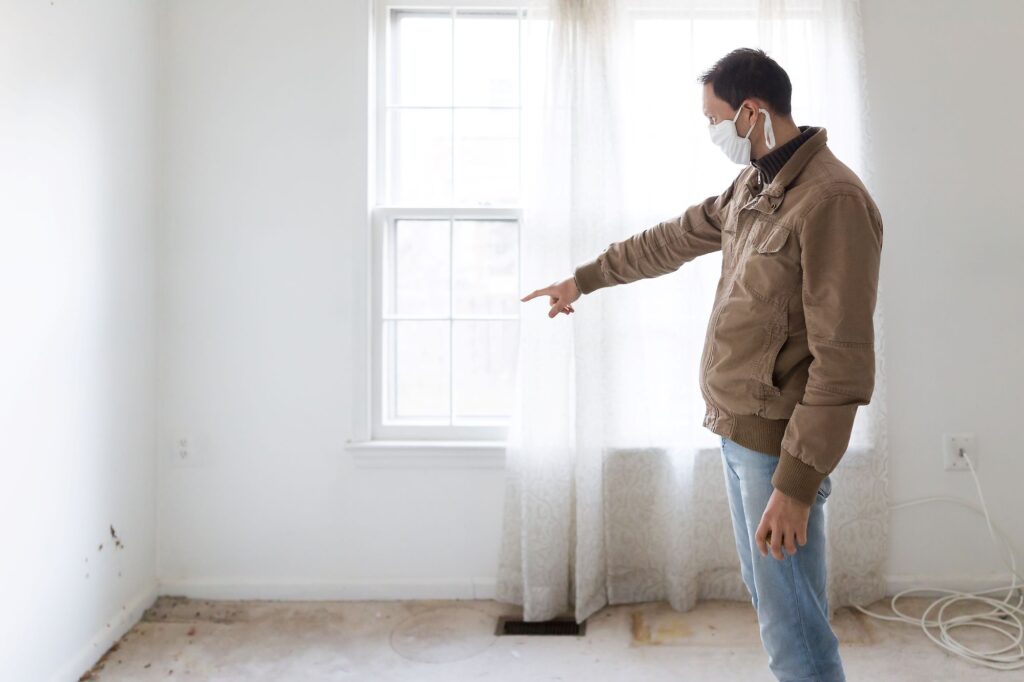Mold testing is vital for anyone looking to buy a home. It’s not just about maintaining the appearance of a home; mold can present serious health risks. Allergies, respiratory issues, and other ailments can be caused by exposure to certain molds. For home buyers, understanding these risks is crucial.
This article aims to guide you through the intricacies of mold testing. It will educate you about the importance of testing, the potential health hazards, and how to ensure a healthy living environment.
Importance Of Mold Testing Before Buying
Buying a home with unseen mold can be a hazardous venture. Health problems such as asthma and allergies can arise from exposure. The costs of remediation can also be substantial, impacting the new owner financially.
This hidden issue extends beyond health, as a mold infestation can dramatically reduce a property’s value. It can affect the structural integrity of the building, acting as a deterrent for future buyers, and lead to significant depreciation if discovered later, affecting resale value.
Furthermore, the legal aspects surrounding mold are critical to understand. In some jurisdictions, sellers must disclose known mold issues, and failure to do so can lead to legal ramifications. Buyers should be aware that they may have legal rights if mold is discovered after purchase. Consulting with a real estate attorney who understands the local laws on mold disclosure can be an essential and cohesive step in the home-buying process.
Mold Inspection Methods
When it comes to mold inspection, home buyers have several options to consider. They can choose between do-it-yourself kits and professional inspection services.
- DIY Testing Kits
Do-it-yourself mold testing kits are readily available in stores and online. These kits often include swabs and culture plates that allow you to test for mold presence. While cost-effective, the accuracy can vary, and interpreting the results might require some knowledge of molds. User instructions should be followed carefully to ensure the most accurate results.
- Professional Inspection Services
Professional mold inspection services, such as those offered by St. Petersburg Mold Testing, provide a more thorough examination of the property. Trained inspectors use specialized equipment to detect mold, even in hidden areas. They can also identify the type of mold and offer recommendations for remediation. Although more expensive, a professional inspection gives a detailed and accurate assessment, which is vital for informed decision-making.
While DIY kits can be an affordable option for some, others may find the precision and insights offered by professional services to be worth the extra investment. Careful evaluation of both options can guide home buyers to the best choice for their particular situation.

How To Interpret Results
Interpreting mold test results is a critical step in the inspection process. Detailed reports from professionals often provide insights into the mold species, whereas DIY kits may require additional research to interpret.
- What A Positive Result Means
A positive result indicates the presence of mold in the property. It may require immediate attention, especially if toxic mold species are detected. The location, type, and extent of mold growth should guide the next steps, including remediation or further professional consultation. Identifying the type of mold helps in understanding its impact on health. It also guides how urgently the issue needs addressing.
- How To Handle Negative Results
A negative result does not necessarily mean the absence of mold. It could indicate that the mold concentration is below detectable levels or that the testing method was not sensitive enough. Continuous monitoring and prevention strategies are still essential. Consulting with professionals even after a negative result, can provide peace of mind and guidance for ongoing mold management.
Understanding and interpreting mold test results correctly is essential in guiding appropriate actions, ensuring a safe and healthy home for buyers.
Remediation Process
The process of mold remediation involves several crucial steps:
- Identify The Source: Locate the source of moisture that’s allowing the mold to grow, such as leaks or humidity.
- Contain The Area: Seal off the affected area with plastic sheeting to prevent mold spores from spreading.
- Wear Protective Gear: Use masks, gloves, and goggles to protect against exposure.
- Remove Infected Materials: Discard materials like drywall or carpet that cannot be cleaned.
- Clean Surfaces: Use a detergent solution without bleach to clean hard surfaces. Scrub thoroughly.
- Dry The Area: Use fans and dehumidifiers to ensure complete drying, preventing future growth.
- Monitor For Reoccurrence: Regular inspections are vital to catch any potential new growth early.
It’s also essential to consider the costs and other significant factors that come into play during the remediation process. This includes choosing between DIY and professional remediation. It also means investing in proper equipment and cleaning products. You must adhere to health and safety guidelines.
Conclusion
Mold testing and remediation are essential processes for prospective home buyers, aiming to ensure a healthy living environment. Understanding different testing methods, interpreting results, and knowing the steps for remediation is a comprehensive process. But it doesn’t have to be overwhelming. With choices ranging from DIY solutions to professional services, there are options to fit various needs and budgets. The right approach and knowledge can turn what might seem like a daunting task into a rewarding journey toward a safe and comfortable home.






